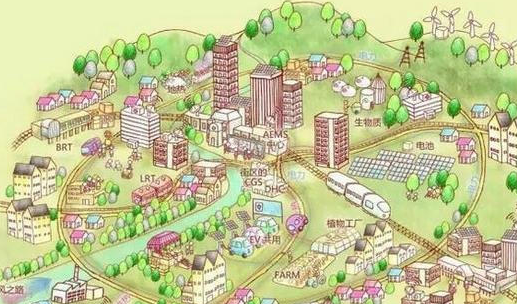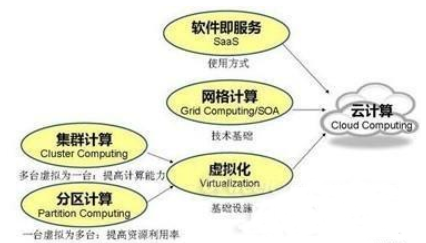At present, large-scale urbanization has become the trend of urban development. How to ensure the safety of food, medicine, and people in large-scale urbanization, build a safe and effective monitoring network; how to meet people's needs in education, health, and medical care. Scientific and effective planning of urban infrastructure; how to promote the adjustment of urban industrial structure, promote the work of energy conservation and emission reduction; how to quickly respond to unexpected events in the city, etc. This series of problems has become the middle of today's large-scale urbanization. The problem to be solved. The traditional technology and management methods can no longer meet the requirements of the modern society. At this time, the new generation of technology and confidence technology can only enter our realization, let us have a new understanding of urban structure, urban function and urban positioning. The concept of “smart city†was created in such a context. Building a smart city has become a necessary part of the current urban construction. First, the construction of smart cities Smart city refers to the development of the city towards a deeper level of informatization, using advanced information technology to build the city's infrastructure, making urban management more simple and effective. Providing residents of urban life with a good environment in which people and people, people and things, people and society live in harmony. Let the city have the characteristics of intelligent collaboration, resource sharing, interconnection and comprehensive perception. Achieve smart service and management of the city. In recent years, with the rise of new technologies such as mobile Internet, Internet of Things, cloud computing, etc., the practice research of smart cities is also constantly improving. How to use the mobile Internet, cloud computing, Internet of Things and other technologies to solve the problems in the current large-scale urbanization and comprehensively improve the level of the city in terms of people's livelihood, government affairs, and industry has become an important topic in the development of modern cities. IoT technology plays an important role in modern information technology. It will have the end facilities of intelligent modules such as mobile terminals, RFID, sensors, etc., and realize interoperability between short-distance communication, wired long distance or wireless and devices. Meet the smart city's intelligent management of urban resources. The use of the Internet to effectively connect ubiquitous intelligent sensors in urban facilities to achieve a comprehensive perception of the city and the integration of the Internet of Things and “digital citiesâ€. Intelligent decision-making support for education, urban services, public safety, ecological environment, government affairs, people's livelihood, etc., so that smart cities are truly "smart." In addition, smart cities need the support of cloud computing technology, which can be considered as the "brain" of smart cities. The so-called cloud computing is based on the calculation method of the Internet, so that the smart city application system can obtain software services, storage space and computing power from the resource words composed of a large number of computers according to their own needs, and improve the system resources. usage efficiency. Therefore, Internet of Things technology and cloud computing technology are important components in the construction of smart cities. Second, cloud-based smart city architecture Smart cities are generated by the integration of Internet of Things technology, cloud computing technology and digital cities. The goal of smart city development is to form a systematic and huge Internet of Things, to apply sensing devices to every corner of the city, and to be powerful through the background. The computer completes the integration of large amounts of data, thus realizing the tremendous changes that smart cities bring to the city's services and management. As shown in Figure 1, the smart city architecture can be divided into four parts, namely, wisdom and English, and application support. Platform, network layer, and perception layer. The sensing layer collects information through facilities with modules such as RFID, camera, and sensors, and transmits the information collected by these facilities to the data center through the network. The data center platform has powerful computing, storage, decision-making, and management capabilities, and includes professional databases covering various industries. It can provide data information support for a series of smart applications such as campus, environmental protection, transportation, and government affairs. The sensor terminal transmits a large amount of information collected to the data center, and the data center integrates and analyzes the incoming information to realize the intelligent application of the smart city. In the traditional urban architecture, the hardware server has been unable to meet the management and processing of large amounts of data, applying cloud computing in the transport layer and application layer of the Internet of Things, making cloud computing a smart city service, which is a good solution. A large amount of data calculation and storage issues. At the same time, the operating efficiency of the smart city application system is greatly improved to a certain extent. The purpose of building a smart city is to achieve the sharing and high integration of a large amount of data, and the characteristics of cloud computing are in line with the construction of smart cities. Therefore, the smart city architecture based on IoT technology and cloud computing technology is shown in Figure 2. The system mainly consists of a cloud security layer, a smart city operation support system, an infrastructure layer, a cloud service platform, an application layer, and a portal layer. 1. Cloud security layer The cloud security layer involves all aspects of the smart city, ensuring that the application system in the smart city can operate normally. 2. Smart City Operation Support System This system is established for the new characteristics of smart city applications, ensuring the normal operation of smart city application systems. 3. Infrastructure layer Smart city is the bottom layer of the infrastructure layer. The basic structure of cloud computing is the infrastructure layer, which consists of two parts, one is the basic resource and the other is the access only. The basic resource is the establishment of various industries. Also, the database, each smart city application is accessed in accordance with its own needs, and the resource utilization rate is improved to a certain extent, realizing the cooperation and sharing of resources. Intelligent access includes basic communication networks and Internet of Things-aware devices to ensure access to smart city applications. 4. Cloud service platform and application layer The middle layer of smart city is a cloud service platform. Mainly for the smart city application system, not only can the sharing and management of urban resource information be realized on this service platform, but also some smart city applications can be released. In addition, relying on its powerful information integration capability, it can also Users provide scientific and reasonable decisions. Smart city application systems are mainly represented in three major areas, namely, smart industry, smart people's livelihood, and smart government. Through intelligent and refined smart city applications, we can meet the various needs of information technology in various fields. 5. The portal layer The portal layer is a display of various smart city application results to users, enterprises and governments. At the same time, this layer also provides a platform for urban residents to experience smart city application systems, where urban residents can enjoy various wisdom. Urban application. Internet of Things technology is the expansion and extension of Internet technology. Internet of Things technology makes the network more interconnected and plays an important role in the construction of smart cities. However, because the storage and computing capabilities of network terminals cannot meet the demand, cloud computing technology Powerful storage, computing, and information integration capabilities have solved this problem, not only achieving the calculation and storage of large amounts of data, but also a certain degree of security. Therefore, the construction of smart cities also needs cloud computing technology as a support. Smart Internet is truly “smart†by applying IoT technology and cloud computing technology. Conclusion Smart cities have become a trend of global urban development. In order to ensure the development of smart cities and realize the intelligent management of urban resources, it is necessary to support IoT technology, cloud computing technology and mobile Internet technology, so that cities cannot be realized. Service and management are realized, making the city truly “smartâ€. best dc current sensor,best current sensor,ac current sensor,battery current sensor Shanghai Zhilong Electronic Technology Co.,Ltd , https://www.zhilongsensor.com

